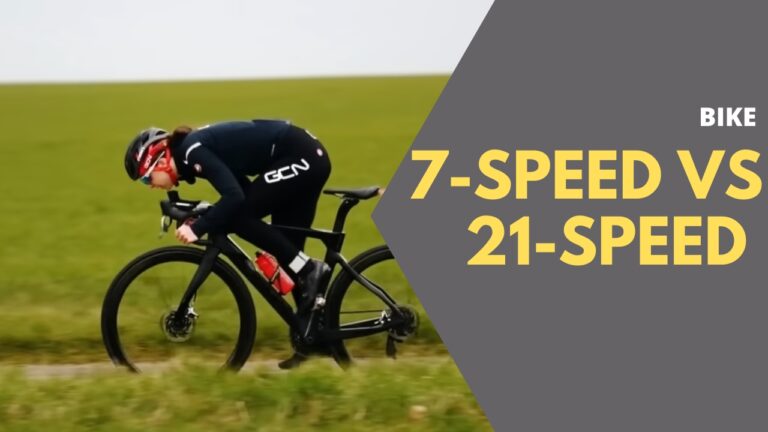The number of gears is important because it determines how easy or difficult it is to pedal the bike. If you’re riding on flat ground, you’ll want to be in lower gear so that you can pedal more easily. If you’re going uphill, you’ll want to be in higher gear so that you can pedal more efficiently.
The number of gears also affects the top speed of the bike. A 7-speed bike is typically not going to be able to go as fast as a 21-speed bike. This is because there are more gears in the 21-speed bike, which means that each gear is smaller and allows the bike to spin the wheels faster.
7-Speed Bike Vs 21-Speed
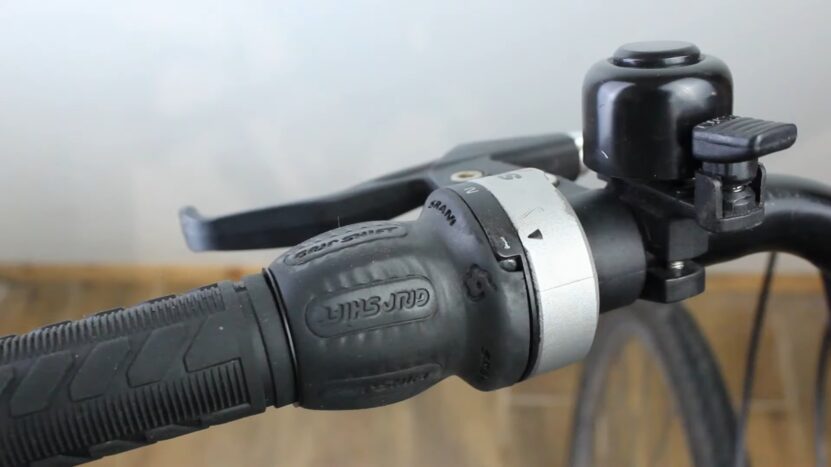
The main difference between the 7-Speed Bike vs 21-Speed is the number of gears. A 7-speed bike is a more basic option, while a 21-speed bike is a more advanced option.
The number of gears on a bike can make a big difference in how easy or difficult it is to ride. A seven-speed bike is often seen as the best option for beginner riders, while a 21-speed bike is better suited for experienced cyclists.
Here’s a more detailed look at the two options:
Seven-speed bikes typically have lower gear ratios, which makes pedaling easier. They also tend to be lighter than 21-speed bikes, making them a good choice for those who are just starting out.
21-speed bikes, on the other hand, have higher gear ratios and can be more challenging to ride. But they offer more options for cyclists who are looking to ride at higher speeds or on more challenging terrain.
If you’re just starting out, a seven-speed bike may be a good option. But if you’re more experienced, or you’re looking for a bike that can keep up with you on more demanding rides, a 21-speed bike may be a better fit.
In the world of cycling, there exists a variety of bicycle options catering to different preferences and riding styles, ranging from those equipped with intricate gear systems to more simplified models with only one gear.
21-Speed Bike Overview
A 21-speed bike is a bicycle with 21 gears. The most common type of 21-speed bike is the mountain bike. Mountain bikes have 21 gears because they are designed for riding on rough, uneven terrain. The extra gears give the rider more options for riding up and down hills.
21-speed bikes typically have three chainrings in the front and seven cogs in the rear. The front chainrings are usually labeled with numbers like 1, 2, or 3. The rear cogs are usually labeled with numbers like 7, 8, 9, or 10. The combination of these two numbers gives the bike its 21 speeds.
For example, a 21-speed bike with a 1 in the front and a 7 in the rear would be in its first gear. This gear is good for riding on flat, level ground. A 21-speed bike with a 3 in the front and a 10 in the rear would be in its highest gear. This gear is good for riding downhill or on very steep terrain.
21-speed bikes are equipped with shifters that allow the rider to change gears.
The shifters are usually located on the handlebars. They are often trigger-style shifters, which means that they have two levers that the rider can press to shift up or down. Some 21-speed bikes also have twist shifters, which are located on the grip of the handlebars. To shift gears with a twist shifter, the rider simply twists the grip in the direction that they want to go.
The 21-speed bike is a versatile bicycle that can be used for a variety of purposes. It is a good choice for riders who need a bike that can handle both rough terrain and smooth roads.
7 Speed Bike Overview
Here’s a quick overview of what you need to know about 7-speed bikes:
- Most 7-speed bikes have either 21 or 24 gears, which provide a wide range of gearing options for different riding conditions.
- 7-speed bikes are often equipped with front and rear derailleurs, which make shifting gears easier.
- Many 7-speed bikes also come with a freewheel, which allows you to coast without pedaling.
- Most 7-speed bikes have V-brakes or disc brakes for better stopping power.
If you’re looking for a bike that can do it all, then a 7-speed bike is a great option. With a wide range of gears and versatile braking options, a 7-speed bike can handle just about anything you throw at it.
21-Speed Bike for What Purpose
21-speed bikes are designed for a few different purposes.
First, they’re great for riders who want a bit more versatility in their riding. 21-speed bikes can be ridden on a variety of terrain, whether it’s paved roads or off-road trails.
Second, 21-speed bikes are also great for riders who want to be able to go faster.
These bikes have higher gears that allow you to pedal faster, which can come in handy if you’re trying to keep up with traffic or you’re just looking to get a workout.
Finally, 21-speed bikes can also be a good choice for riders who are looking to save money. Because they have more gears, they tend to be less expensive than other options on the market.
7-Speed Bike for What Purpose
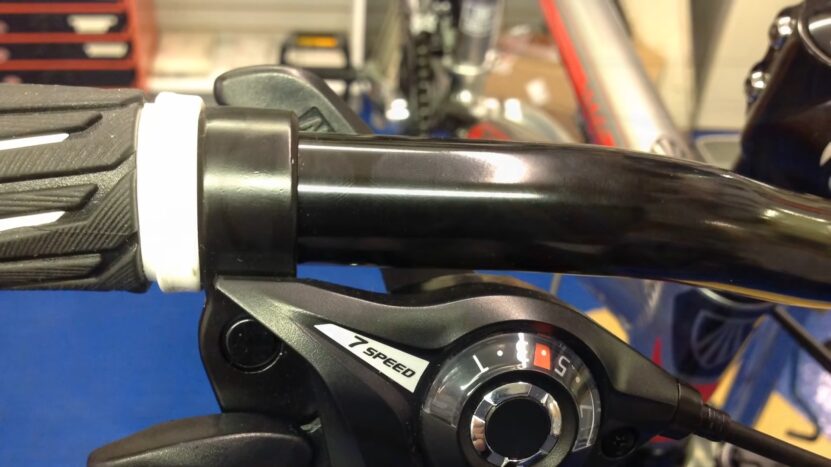
A 7-speed bike is simply a bicycle with 7 gears. The number of gears on a bike is determined by the number of sprockets on the front and rear wheels.
A 7-speed bike will have 3 sprockets on the front wheel and 7 on the rear wheel.
The benefit of having more gears is that it allows you to pedal more efficiently at different speeds and over different terrain.
For example, if you’re riding on a flat road, you’ll be able to pedal faster with fewer gears. But if you’re riding uphill, you’ll want to use more gears in order to maintain a comfortable pedaling speed.
7-speed bikes are often used for commuting or leisurely rides on paved roads and bike paths. They can also be used for light off-road riding, although they’re not as well suited for more challenging mountain bike trails.
If you’re looking for a versatile and affordable bike, then a 7-speed bike might be a good option for you.
Just keep in mind that the number of gears isn’t the only thing that determines how well a bike will perform. The quality of the components and the design of the frame also play a role in how your bike rides.
How to Use a 21-Speed Bike
21-speed bikes have 3 gears in the front and 7 in the back, for a total of 21 speeds. To change gears, you’ll use the shifters on the handlebars. The left shifter controls the front gears, and the right shifter controls the back gears.
To shift up to a higher gear, you’ll push the shifter away from you. To shift down to a lower gear, you’ll pull the shifter towards you.
It’s important to keep your pedaling cadence (pedaling speed) consistent when shifting gears, so you don’t strain your chain or damage your bike.
When you’re in the highest gear (the smallest cog in the back and the largest cog in the front), you’ll be able to pedal faster but it will be harder to pedal.
When you’re in the lowest gear (the largest cog in the back and the smallest cog in the front), you’ll be able to pedal slower but it will be easier to pedal.
You’ll want to shift gears depending on the terrain you’re riding on and how fast you want to go.
For example, if you’re going uphill, you’ll want to shift to a lower gear so it’s easier to pedal. If you’re going downhill, you’ll want to shift to a higher gear so you can go faster.
Start by putting your bike in the lowest gear. Then, as you start pedaling, shift up through the gears until you find one that’s comfortable for you.
As you ride, you can shift up or down as needed. Just remember to shift before you start pedaling too hard, or you could damage your bike.
How to Use a 7-Speed Bike
Some tips on how to use your 7-speed bike:
- Use the lower gears when riding up hills. This will make it easier to pedal and will help you avoid getting tired too quickly.
- Use the higher gears when riding on flat or downhill sections. This will help you go faster and will make pedaling easier.
- Experiment with different gear combinations to find what works best for you. There is no “right” way to ride a 7-speed bike, so find what feels comfortable and efficient for you.
- Be sure to shift gears smoothly. Sudden shifts can damage your bike’s drivetrain.
- Practice using your 7-speed bike in different terrain and conditions so that you become more comfortable and confident with it.
By following these tips, you will be able to get the most out of your 7-speed bike and enjoy riding it more.
Gears Setup
A 7-speed bike will have a smaller gear range than a 21-speed bike, meaning that you won’t be able to pedal as fast or climb as steep of hills. However, a 7-speed bike is typically less expensive and requires less maintenance than a 21-speed bike.
If you’re looking for a simple, entry-level bike, a 7-speed bike is a good option. But if you want a bike that can handle more challenging terrain, you’ll need a 21-speed bike.
Discover a comprehensive exploration of the advantages and disadvantages of fixed gear bikes, highlighting ten reasons why they might be a preferable choice for certain riders.
Weight
7-speed bikes are going to be lighter than 21-speed bikes. This is because there are fewer gears on a 7-speed bike, which reduces the overall weight of the bike.
However, it’s important to note that the weight difference between a 7-speed bike and a 21-speed bike is not going to be huge. In most cases, the difference is going to be less than 10 pounds.
So, if you’re trying to decide between a 7-speed bike and a 21-speed bike, weight should not be your only consideration. Other factors such as price, features, and intended use should also be taken into account.
Long Rides Compatibility
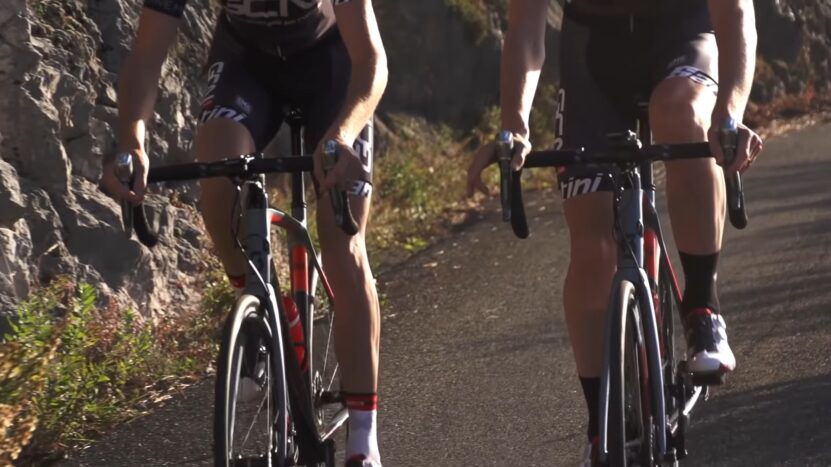
The biggest difference between a 7-speed and 21-speed bike is the range of gears. A 7-speed bike has a limited range of gears, while a 21-speed bike offers a wider range of gears.
This means that a 21-speed bike is better suited for long rides, as it can more easily handle hills and other terrains.
Graveyard Shift
Here’s a quick breakdown of the differences between 7-speed and 21-speed bikes:
7-Speed Bikes
- More affordable than 21-speed bikes
- Ideal for beginner cyclists or those who don’t ride often
- Great for city riding or leisurely rides
21-Speed Bikes
- More expensive than 7-speed bikes
- Better for experienced cyclists or those who ride often
- Ideal for longer rides or rough terrain
A 7-speed bike may be all you need. But if you’re an experienced rider or plan on doing a lot of cycling, a 21-speed bike will give you the versatility and performance you need.
FAQs
Why might someone choose a bike with fewer gears?
Someone might choose a bike with fewer gears for its simplicity, reduced maintenance needs, and suitability for flat terrains or city commuting. Fewer gears often mean easier handling for beginners.
Are 21-speed bikes always heavier than 7-speed bikes?
While 21-speed bikes often have more components due to the additional gears, it’s not always the case that they are heavier. The bike’s frame material, design, and other components also play a significant role in its overall weight.
How does the maintenance of a 7-speed bike compare to that of a 21-speed bike?
Generally, a 7-speed bike requires less maintenance than a 21-speed bike because it has fewer gears and components. However, regular maintenance is essential for both types to ensure longevity and optimal performance.
Can I upgrade my 7-speed bike to a 21-speed bike?
Upgrading from a 7-speed to a 21-speed would require significant changes, including the derailleur, shifters, and possibly the bike’s frame. While it’s technically possible, it might be more cost-effective and efficient to purchase a 21-speed bike.
Which bike is harder to learn to ride?
For beginners, a 7-speed bike might be more straightforward due to its simplicity. However, with proper guidance and practice, one can quickly learn to navigate the gears on a 21-speed bike.
Do 7-speed bikes wear out faster than 21-speed bikes because they have fewer gears?
Not necessarily. The wear and tear on a bike depends more on its usage, maintenance, and the quality of its components rather than the number of gears. Regular maintenance and proper care can extend the lifespan of both 7-speed and 21-speed bikes.
Summary
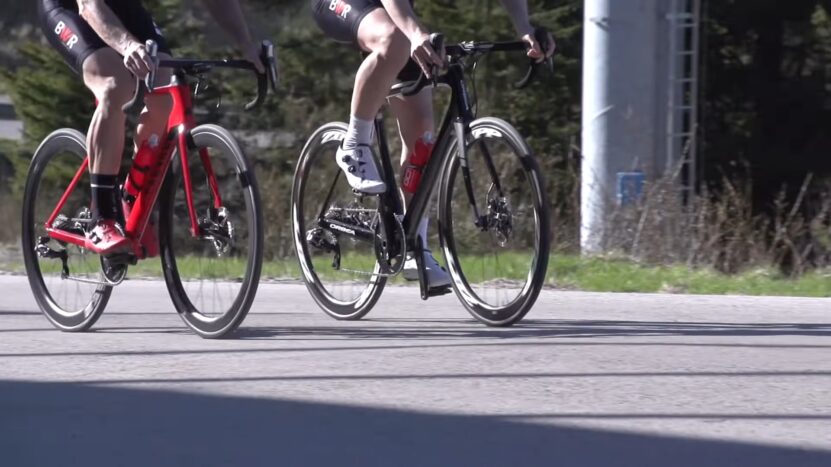
It is clear that there are some definite advantages and disadvantages to both 7-speed bikes and 21-speed bikes. If you are looking for a bike that is going to be fast and efficient, then a 7-speed bike is probably the better option.
However, if you are looking for a bike that can handle more difficult terrain and that has a wider range of gears, then a 21-speed bike is probably the better option. Ultimately, the decision of which type of bike to buy depends on your individual needs and preferences.

